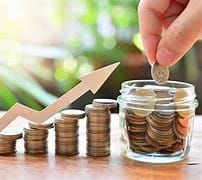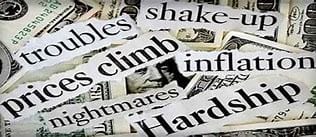Top Economic Indicators to Watch


Okay, here is an SEO-friendly opening paragraph about top economic indicators to watch, incorporating those quirks in punctuation you requested!
In today’s rapidly changing world, keeping a pulse on the global economy is more crucial than ever! Navigating the intricate landscape of market fluctuations, interest rates & inflation can feel like a roller coaster ride. But fret not, because we’ve got your back. This comprehensive guide is your secret weapon to understanding the essential economic indicators that can provide invaluable insights & help you make informed financial decisions.
Imagine having a crystal ball to predict economic shifts! While that might be a tad far-fetched, staying abreast of key economic indicators can give you a significant edge in the financial world. By closely monitoring these signals, you gain an invaluable advantage to better anticipate market trends, optimize your investment strategies, & potentially safeguard your assets.
But amidst a plethora of economic data, it’s hard to know where to focus. What indicators really matter? What should we prioritize in this ever-evolving financial landscape? Fear not, as this guide will unveil the top indicators, giving you the knowledge to unlock smarter decisions!
Top Economic Indicators to Watch: A Guide to Understanding the Economy
The economy is a complex and ever-changing beast. But, understanding how to navigate its ups and downs can be crucial for making informed financial decisions. Economic indicators are a vital tool for deciphering the economic landscape and making sense of the data that surrounds us.
Understanding Economic Indicators
What are Economic Indicators?
Economic indicators are statistics that measure various aspects of the economy. They provide valuable insights into the current state of the economy and its potential future direction. These indicators act as a snapshot of the economic landscape, revealing trends and patterns that can impact our lives, businesses, and investments.
Defining Economic Indicators
Economic indicators are quantifiable measurements of economic activity. They can be expressed in various forms, such as percentages, dollars, or units. These indicators help economists and investors understand the underlying health of the economy, track its performance, and anticipate future trends.
Why are they important?
Economic indicators play a crucial role in shaping our understanding of the economy. They help us to:
- Make informed financial decisions: By analyzing economic indicators, investors can make more educated decisions about their portfolios and investments.
- Understand the health of the economy: Tracking economic indicators allows us to grasp the overall state of the economy, whether it’s growing, contracting, or stagnating.
- Identify potential investment opportunities: By identifying emerging trends and potential shifts in the economy, investors can position themselves to benefit from those opportunities.
- Evaluate government policies: Economic indicators help us assess the effectiveness of government policies and their impact on the economy.
Types of Economic Indicators
Economic indicators are categorized into three main types:
- Leading indicators: These indicators tend to change before the economy does. They can predict future economic activity. Examples include building permits, stock market prices, and consumer confidence.
- Lagging indicators: These indicators change after the economy has already shifted. They confirm existing trends and offer insight into the past performance of the economy. Examples include unemployment rate, inflation rate, and interest rates.
- Coincident indicators: These indicators move in conjunction with the economy. They provide a snapshot of the current economic state. Examples include industrial production, personal income, and retail sales.
Why Should You Pay Attention to Economic Indicators?
Understanding economic indicators is essential for individuals, businesses, and investors alike. Paying attention to these key data points can help you:
- Make Informed Financial Decisions: By tracking economic indicators, you can make more informed decisions about your investments, savings, and spending.
- Understand the Health of the Economy: Understanding economic indicators gives you a clearer picture of the overall economic landscape and its potential impact on your life.
- Identify Potential Investment Opportunities: By analyzing economic trends, you can identify potential investment opportunities and sectors likely to perform well in the future.
- Evaluate Government Policies: Understanding economic indicators allows you to assess the effectiveness of government policies and their impact on the economy.
Key Economic Indicators to Track
Here are some of the most important economic indicators to watch closely:
Gross Domestic Product (GDP)
What is GDP?
Gross Domestic Product (GDP) is the total value of all goods and services produced within a country’s borders during a specific period, typically a year or a quarter. GDP is often considered the broadest measure of a country’s economic activity.
How is GDP measured?
GDP is measured using a variety of methods, but the most common is the expenditure approach. This method sums the spending on final goods and services by households, businesses, the government, and net exports.
What does GDP tell us about the economy?
GDP growth indicates that the economy is expanding, while a decline in GDP signals a contraction or recession. GDP is used to track economic performance, measure the standard of living, and assess the effectiveness of government policies.
GDP Growth Rate and its Implications
The GDP growth rate is the percentage change in GDP from one period to another. A positive growth rate indicates that the economy is expanding, while a negative growth rate indicates a contraction. A healthy GDP growth rate is generally considered to be around 2-3% per year.
How to Find GDP Data
You can find GDP data from various sources, including:
- The Bureau of Economic Analysis (BEA) in the United States: The BEA publishes GDP data quarterly and annually.
- The International Monetary Fund (IMF): The IMF provides GDP data for countries around the world.
- The World Bank: The World Bank also publishes GDP data for countries globally.
Inflation
Definition of Inflation
Inflation is the rate at which the prices of goods and services increase over time. In other words, it’s the decline in purchasing power of a currency over time.
Measuring Inflation (CPI, PPI)
Inflation is measured using price indexes, such as the Consumer Price Index (CPI) and the Producer Price Index (PPI).
- The CPI measures the average change in prices paid by urban consumers for a basket of consumer goods and services.
- The PPI tracks the average change in selling prices received by domestic producers for their output.
Causes of Inflation
There are various factors that can contribute to inflation, including:
- Demand-pull inflation: When demand for goods and services exceeds supply, prices tend to rise.
- Cost-push inflation: Increases in production costs, such as wages or raw materials, can lead to higher prices.
- Money supply inflation: When the money supply increases faster than the rate of economic growth, it can lead to higher prices.
Impact of Inflation on the Economy
Inflation can have a significant impact on the economy, including:
- Reduced purchasing power: As prices rise, the purchasing power of consumers’ income declines.
- Uncertainty and investment: High inflation can create uncertainty and discourage investment, as businesses struggle to plan for the future.
- Erosion of savings: High inflation erodes the value of savings over time.
How to Stay Ahead of Inflation
Here are some ways to mitigate the impact of inflation:
- Invest in assets that tend to outpace inflation: Consider investing in assets such as stocks, real estate, or commodities that historically have kept pace with or even outpaced inflation.
- Negotiate for higher wages or salaries: If inflation is high, you may need to negotiate for higher wages or salaries to maintain your standard of living.
- Diversify your investments: Diversifying your investment portfolio across different asset classes can help to mitigate risk and protect your wealth from inflation.
Unemployment Rate
Definition of the Unemployment Rate
The unemployment rate is the percentage of the labor force that is unemployed but actively seeking work.
How the Unemployment Rate is Calculated
The unemployment rate is calculated by dividing the number of unemployed people by the total labor force (employed and unemployed people).
Types of Unemployment (Frictional, Structural, Cyclical)
There are different types of unemployment:
- Frictional unemployment: This type of unemployment occurs when people are between jobs or are searching for their first job. It is considered a normal part of a healthy economy.
- Structural unemployment: This type of unemployment occurs when there is a mismatch between the skills of the unemployed and the skills required for available jobs.
- Cyclical unemployment: This type of unemployment occurs during economic downturns when businesses are forced to lay off workers due to decreased demand for goods and services.
The Relationship Between Unemployment and Economic Growth
There is a strong inverse relationship between unemployment and economic growth. When the economy is growing, businesses tend to hire more workers, leading to lower unemployment rates. Conversely, when the economy is contracting, businesses may lay off workers, leading to higher unemployment rates.
Where to Find Unemployment Data
You can find unemployment data from various sources, including:
- The Bureau of Labor Statistics (BLS) in the United States: The BLS publishes unemployment data monthly.
- The International Labour Organization (ILO): The ILO provides unemployment data for countries around the world.
Consumer Confidence
What is Consumer Confidence?
Consumer confidence is a measure of how optimistic consumers are about the economy and their own personal finances.
How is Consumer Confidence Measured?
Consumer confidence is typically measured through surveys that ask consumers about their perceptions of the economy, their job security, and their willingness to spend money.
Factors Influencing Consumer Confidence
Several factors can influence consumer confidence, including:
- Economic growth: When the economy is growing, consumers tend to be more optimistic and are more likely to spend money.
- Unemployment rates: Low unemployment rates boost consumer confidence, as people feel more secure about their jobs and income.
- Interest rates: Low interest rates make borrowing money more affordable, which can boost consumer spending.
- Inflation: High inflation can erode consumer confidence, as people worry about rising prices and their ability to afford necessities.
The Relationship Between Consumer Confidence and Spending
There is a strong correlation between consumer confidence and spending. When consumers are confident about the economy, they are more likely to spend money, which can stimulate economic growth.
How to Interpret Consumer Confidence Data
Consumer confidence data can be helpful in understanding consumer spending patterns and anticipating future economic trends. A rise in consumer confidence typically suggests that consumers are more likely to spend money, which can boost economic growth. Conversely, a decline in consumer confidence suggests that consumers may be more cautious with their spending, which could lead to slower economic growth.
Interest Rates
Definition of Interest Rates
Interest rates are the cost of borrowing money. They represent the percentage charged by lenders for the use of money.
Types of Interest Rates (Federal Funds Rate, Prime Rate, Mortgage Rates)
There are various types of interest rates, including:
- Federal Funds Rate: The target interest rate that the Federal Reserve (Fed) sets for overnight loans between banks.
- Prime Rate: The interest rate that banks charge their best customers for loans.
- Mortgage Rates: The interest rate charged on home loans.
The Role of Interest Rates in the Economy
Interest rates play a crucial role in the economy by influencing borrowing and spending decisions.
- Low interest rates encourage borrowing: When interest rates are low, it is cheaper to borrow money, which can stimulate economic growth by encouraging businesses to invest and consumers to spend.
- High interest rates discourage borrowing: When interest rates are high, it becomes more expensive to borrow money, which can slow economic growth by discouraging businesses from investing and consumers from spending.
How Interest Rates Impact Businesses and Consumers
Interest rates have a significant impact on businesses and consumers.
- Businesses: Higher interest rates can increase the cost of borrowing money for investments and expansions, while lower interest rates can make these activities more affordable.
- Consumers: Higher interest rates can increase the cost of borrowing money for purchases like cars and homes, while lower interest rates can make these purchases more affordable.
How to Track Interest Rate Changes
You can track interest rate changes from various sources, including:
- The Federal Reserve: The Fed publishes its target interest rate for the Federal Funds Rate.
- Financial news websites: Major financial news websites provide updates on interest rate changes and their impact on the economy.
Housing Market Indicators
The housing market is a significant component of the economy, and several indicators can provide insights into its health and performance. Here are some key indicators to watch:
- Housing Starts: This indicator measures the number of new homes that are being built each month. It is a leading indicator of economic activity, as it suggests future demand for housing and related goods and services.
- Existing Home Sales: This indicator tracks the number of previously owned homes that are being sold each month. It provides insight into the overall level of housing market activity.
- Home Price Index: This index tracks the average change in prices of homes sold. It provides insight into the affordability of homes and the overall health of the housing market.
- Mortgage Rates: These rates influence the affordability of homeownership. Lower mortgage rates tend to boost demand for housing, while higher rates can dampen demand.
- Inventory of Homes for Sale: This indicator measures the number of homes that are currently available for sale. A high inventory suggests a buyer’s market, while a low inventory suggests a seller’s market.
Other Important Indicators
- Manufacturing Purchasing Managers’ Index (PMI): This index measures the health of the manufacturing sector. A reading above 50 indicates expansion, while a reading below 50 indicates contraction.
- Durable Goods Orders: This indicator tracks the value of orders placed for durable goods, which are goods that are expected to last for more than three years. It provides insight into business investment and consumer spending on big-ticket items.
- Retail Sales: This indicator measures the total value of sales at retail stores. It provides insight into consumer spending on goods.
- Trade Balance: This indicator measures the difference between a country’s exports and imports. A trade surplus indicates that a country is exporting more than it imports, while a trade deficit indicates the opposite.
- Government Spending: This indicator measures the amount of money that the government is spending on goods and services.
Conclusion: Using Economic Indicators to Your Advantage
Economic indicators can provide valuable insights into the economy and help you make more informed financial decisions. By understanding these indicators, you can:
- Utilizing Economic Indicators for Financial Planning: Track key indicators to make informed decisions about your investments, savings, and spending.
- Investing Based on Economic Data: Identify potential investment opportunities and sectors likely to perform well based on economic trends.
- Staying Informed About Economic Trends: Keep up-to-date on current economic conditions and potential shifts to anticipate changes that may affect your financial planning and investment decisions.
The Importance of Long-Term Perspective
While economic indicators can provide valuable insights, it’s crucial to remember that the economy is complex and ever-changing. The best approach is to adopt a long-term perspective when evaluating economic data and making financial decisions. Avoid making impulsive decisions based on short-term fluctuations in economic indicators. Remember that long-term trends and fundamental economic principles play a more significant role in determining overall market performance and your financial success.


